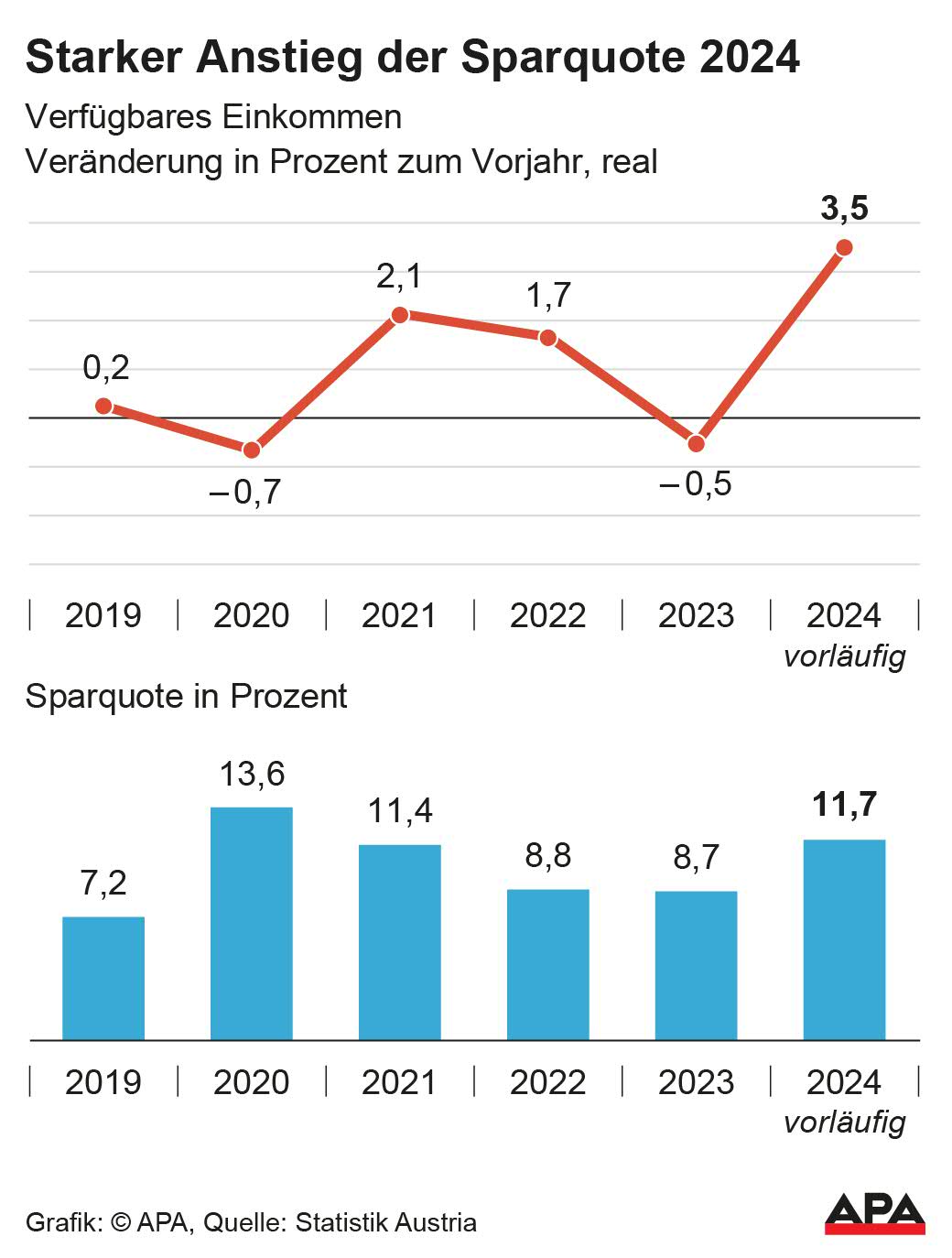Households Set Aside More Money Last Year

Households set aside much more money in 2024 than in the previous year. Thus, the savings rate increased by 3 percentage points to 11.7 percent of disposable income, Statistics Austria announced on Monday. The inflation-adjusted disposable income rose by 3.5 percent. The high savings rate was reflected in weak consumption: This increased by only 0.1 percent year-on-year in real terms. In 2023, there were still declines of 0.5 percent each.
The inflation-adjusted disposable income rose by 3.5 percent. The high savings rate was reflected in weak consumption: This increased by only 0.1 percent year-on-year in real terms. In 2023, there were still declines of 0.5 percent each.
Why Higher Savings Rate?
The significant increase in the savings rate was attributed by Statistics Austria Director General Tobias Thomas to "the great uncertainties." The savings rate of 11.7 percent was not only above that of the previous year but also clearly above the average of the pre-Corona years 2010 to 2019 with 8.0 percent, Thomas noted.

In total, private households and private non-profit organizations had 285.7 billion euros available last year. Although this corresponded to a nominal growth of 6.8 percent, this amount was significantly reduced by inflation with a consumption deflator of 3.2 percent.
Employee Compensation and Social Benefits
Employee compensation increased nominally by 8.5 percent in 2024, while monetary social benefits were increased by 10.3 percent. The increases were due to delayed inflation adjustments in wages, salaries, and pensions. Other transfers increased by 8.6 percent. In comparison, social contributions and taxes paid by private households increased by 7.7 and 7.4 percent, respectively.
However, there were losses last year in self-employment income, operating surplus, and property income. These decreased by a total of 4.2 percent.
(APA/Red)
This article has been automatically translated, read the original article here.





